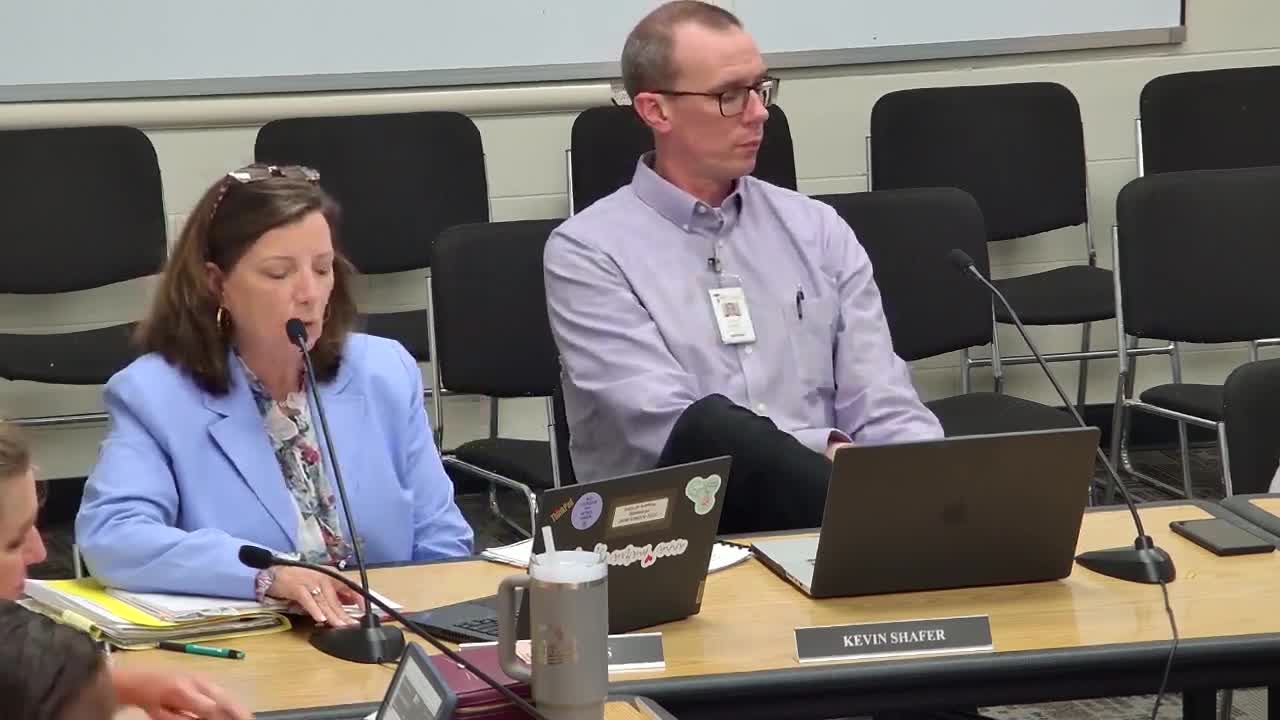Talbot County education officials weigh funding options amid ESSER project challenges
November 04, 2024 | Talbot County Public Schools, School Boards, Maryland
This article was created by AI summarizing key points discussed. AI makes mistakes, so for full details and context, please refer to the video of the full meeting. Please report any errors so we can fix them. Report an error »

In a recent work session held by Talbot County Public Schools, officials grappled with significant financial challenges stemming from federal funding restrictions. The meeting, which took place on November 4, 2024, revealed the complexities surrounding the use of ESSER (Elementary and Secondary School Emergency Relief) and Maryland LEADS funds, as well as the implications for ongoing projects and operational costs.
The discussion began with an urgent notification from the U.S. Department of Education, instructing the school district to halt all spending on projects funded by ESSER and Maryland LEADS. This directive led to a backlog of invoices, including a notable $81,000 bill from Marathon Health for work completed but not yet billed. School officials were advised to hold off on payments until further notice, creating a financial bottleneck.
However, a glimmer of hope emerged when the Maryland State Department of Education announced a temporary reopening of the funding window for reimbursements. The district quickly submitted two invoices, one for the aforementioned $81,000 and another for additional costs related to the project. Unfortunately, the latter was rejected due to timing issues, as the expenses were deemed outside the grant period.
In light of these challenges, the district received an offer of $300,000 from Mabe, a local organization, to assist with construction costs. Marathon Health also proposed to absorb future startup and construction costs, contingent upon extending their agreement from five to seven years. This option could provide immediate financial relief, but it raises questions about long-term commitments.
The conversation also touched on the district's financial reserves, with over $800,000 available through the Esmeq Health Alliance. While this fund could help cover operating costs, officials noted that a year’s worth of operating expenses amounts to approximately $750,000. The hope is that investing in health services now could lead to savings in the future as employees receive better care and preventative services.
As the meeting progressed, concerns were raised about the overall budgetary climate and the potential impact of these financial decisions on other essential services, such as auditorium lighting. Board members expressed apprehension about the high costs associated with the Marathon agreement, questioning whether the anticipated savings would justify the investment.
The session concluded with a call for further discussion and consideration of the options available. As the district navigates these financial hurdles, the outcome will significantly influence the quality of services provided to both students and staff in Talbot County. The urgency of the situation underscores the need for strategic decision-making in a challenging economic landscape.
The discussion began with an urgent notification from the U.S. Department of Education, instructing the school district to halt all spending on projects funded by ESSER and Maryland LEADS. This directive led to a backlog of invoices, including a notable $81,000 bill from Marathon Health for work completed but not yet billed. School officials were advised to hold off on payments until further notice, creating a financial bottleneck.
However, a glimmer of hope emerged when the Maryland State Department of Education announced a temporary reopening of the funding window for reimbursements. The district quickly submitted two invoices, one for the aforementioned $81,000 and another for additional costs related to the project. Unfortunately, the latter was rejected due to timing issues, as the expenses were deemed outside the grant period.
In light of these challenges, the district received an offer of $300,000 from Mabe, a local organization, to assist with construction costs. Marathon Health also proposed to absorb future startup and construction costs, contingent upon extending their agreement from five to seven years. This option could provide immediate financial relief, but it raises questions about long-term commitments.
The conversation also touched on the district's financial reserves, with over $800,000 available through the Esmeq Health Alliance. While this fund could help cover operating costs, officials noted that a year’s worth of operating expenses amounts to approximately $750,000. The hope is that investing in health services now could lead to savings in the future as employees receive better care and preventative services.
As the meeting progressed, concerns were raised about the overall budgetary climate and the potential impact of these financial decisions on other essential services, such as auditorium lighting. Board members expressed apprehension about the high costs associated with the Marathon agreement, questioning whether the anticipated savings would justify the investment.
The session concluded with a call for further discussion and consideration of the options available. As the district navigates these financial hurdles, the outcome will significantly influence the quality of services provided to both students and staff in Talbot County. The urgency of the situation underscores the need for strategic decision-making in a challenging economic landscape.
View full meeting
This article is based on a recent meeting—watch the full video and explore the complete transcript for deeper insights into the discussion.
View full meeting
